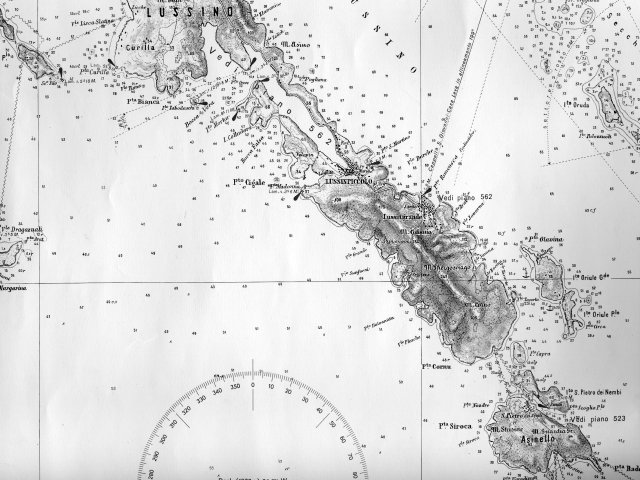The last sailing vessel of Lussino
in the history of the Captain
Ottavio Martinoli
The book deals with the diary of navigation of the Captain Ottavio Martinoli, beginning from the sailing ships to the beginning of 900, sailing from child on the ship of his/her/their father up to the vapor ships and diesel before the second world war and in the following years, on board of the ships oil-tankers.
"Give introductory Notes to the text":
The goal of a good book is not alone to offer a valid representation of the reality in the treated context, in linear and discursive form, so much to be been able to also be read on the beach or on a train, contributing to the magic feeling to reduce the times of route, but also to improve the cultural baggage of the reader.
In the case of the small sailboats my father-in-law made me notice as, with wind of bowline the light gotten additional power using a leeward oar increased the efficiency of the same sails.
To understand is enough him/it to consider that the power applied by an any system propulsivo is given by the product of the strength of push on the boat for the gotten speed.
If a wind of bowline confers to the boat a speed of 3,5 knots and the person in boat, helping himself/herself/itself with the oars makes her reach the 5 knots, since the strength of the wind remains almost the same one, the power furnished by the wind will increase, passing from a value Fx3,5 to a value equal to almost Fx5.
Analogous considerations are worth for the reaction motors of the airplanes, that are made to fly to tall quota because the same motor, with the same consumption schedule of fuel, conferring the same push to the aircraft develops to 900 Km/hs a greater power that not flying to a lower quota to 700 Km/hs.
It follows an explanatory example that confirms the convenience of the use combined sail - motor in the economy of exercise of a boat or a sailing ship.
The ship on which it sailed Ottavio Martinoli to the beginning of the '900 had a length of around 40 - 45 meters and it was endowed with a veiling of around 1000 meters you square that, with a strong wind to the beam you/they could expound a power of around 500 CVs, reaching a speed of around 14 knots (elevated, for a sailing ship).
They follow explanatory schemes on the type of walk of a sailboat, charts of conversion and staircase of the winds.
The author, Eugene Martinoli, shipbuilder, was born to Lussinpiccolo (Pola).
He/she lives in Genoa, where you/he/she has worked for years to the Technical Office of the Society Italy of Navigation.
In the years '60 have followed the jobs of construction of the "Leonardo from you Win" (Genoa-Sestri) and of the "Rafael" (Trieste). It spends part of the summer vacations on the island of Dislocates together with the family ones. In that enchanting sea, in the small bays, in to rustle some pines to the wind and in the aromas of that native earth, Eugene it finds again the roots and so many memoirs of his/her infancy.
The book is edit from the Golden Press:
http://www.goldenpress.com/ordini/ordini.htm
price of the book 7 Euro; written in Italian language
